A niche market is a section of a larger market that can be defined by its own needs and requirements, which target particular individuals. In contrast, large markets focus on a wider audience with broader interests.
In a niche market, your target audience are very specific individuals with very defined needs and interests.
For example, within the market of cameras, there are many different sections or niches: Action cameras, mirrorless cameras, DSL cameras, etc. All these are market niches, and you still can niche down more: Actions camera for motorcycles could be a micro-niche market example.
There are different ways you can refine a market based on an audience’s needs such as:
- Demographics: Age, gender, income level, education.
- Location.
- Interests.
- Behavior.
- Price.
- Quality.
At the end of the day, a successful niche market needs to solve a specific problem for a specific group of people. And the good thing about going niche is that you can focus on solving a specific problem much thoroughly than large market competitors, which reduces your competition.
How a Niche Market Works.
The way a niche market works is quite simple: You need to find a very specific problem affecting a very targeted audience and provide the ideal solution to them.
The end is to create a niche product for your ideal customer based on previous niche research. This research will allow you to identify niche markets with potential customers and smaller competition.
However, it is vital do a deep-dive an understand if a niche can be profitable or not.
For instance, if you find a niche market with no competition, the most likely is that it is not a profitable niche market. But if you can find at least a few competitors, it could be a sign that the niche market could be potentially profitable.
The trick to capitalizing on a niche market is to find a segment where people are already spending money, there is room for growth, and does not have aggressive competition.
Benefits of Niche Marketing.
- Less competition. One of the main advantages of niche marketing is that you remove competitors when you niche down. It also means that your audience will be smaller, but at least your audience will be able to find you if you avoid saturated niches and create a unique product.
- Higher ROI. The fact that niche markets focus on solving a specific problem for a narrow audience makes this audience more likely to buy from you. And if you create a quality product or service, they’ll likely keep coming back to you.
- Cheaper PPC. Marketing to a targeted audience makes it easier for you to save on your marketing dollars. When advertising, competitive terms are very expensive. But when you target long-tail keywords for your niche products, the cost of your ads will be a fraction of the price.
- Better customer loyalty. When you provide a very targeted solution to a targeted audience problem, you provide them with some very valuable that they could not find anymore. This is a great way to build brand loyalty and make happy customers return for more.
- Easier to keep tabs on new trends. When you go niche specific, it is much easier to stay on top of trends and provide your audience with valuable information before anyone else. This will also allow you to stay on top of competitors.
How to find a profitable niche market.
There are different methods you can use to find niche market ideas:
Method 1. Wikipedia
This is how to do it:
Step #1. Head to Wikipedia, and in the search bar, type your niche keyword and click on the desired result:
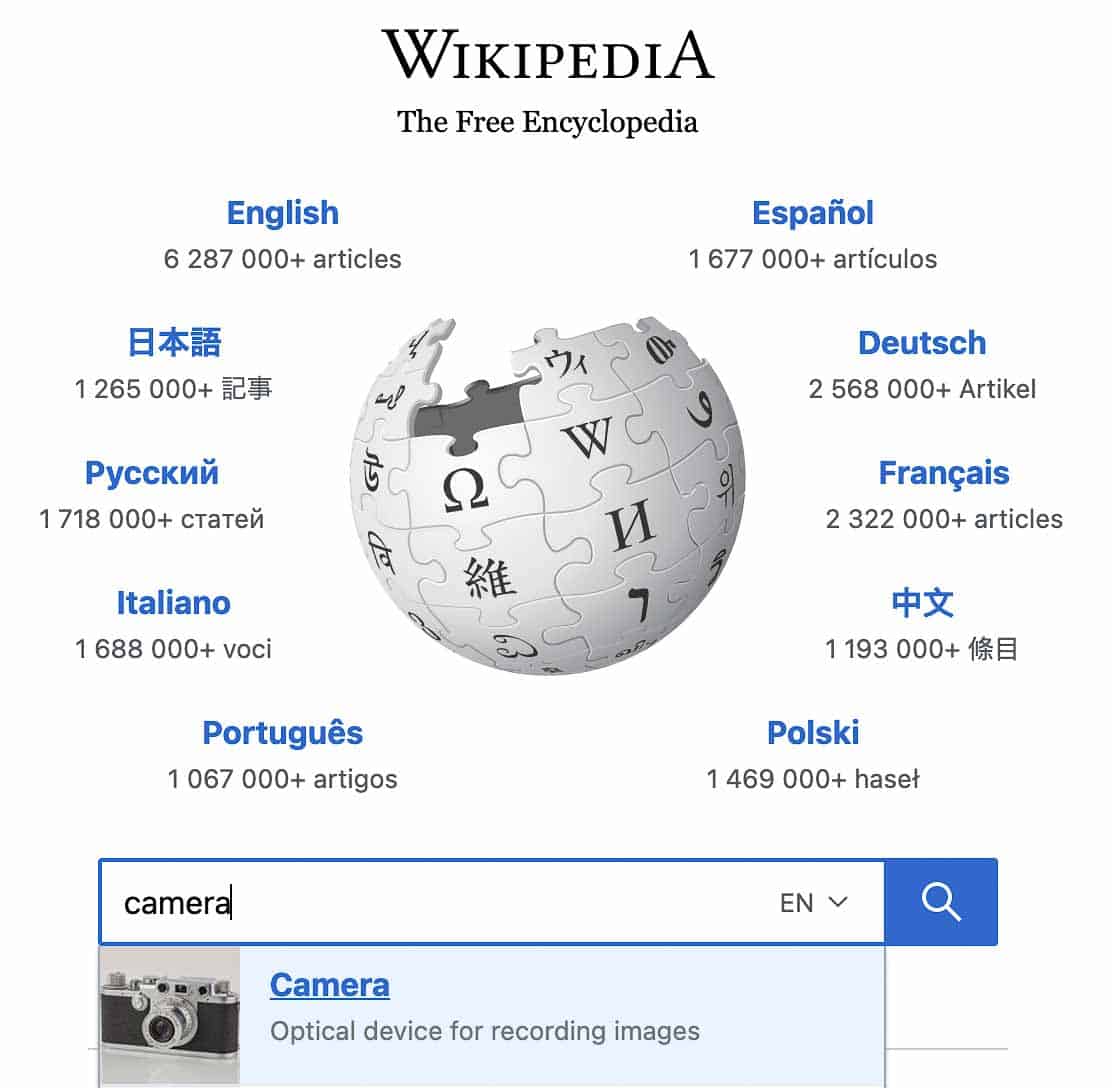
Step #2. Next, skim the page for sub-niche ideas. On some occasions, like this one, you can already find plenty of niche market ideas in the table of contents:
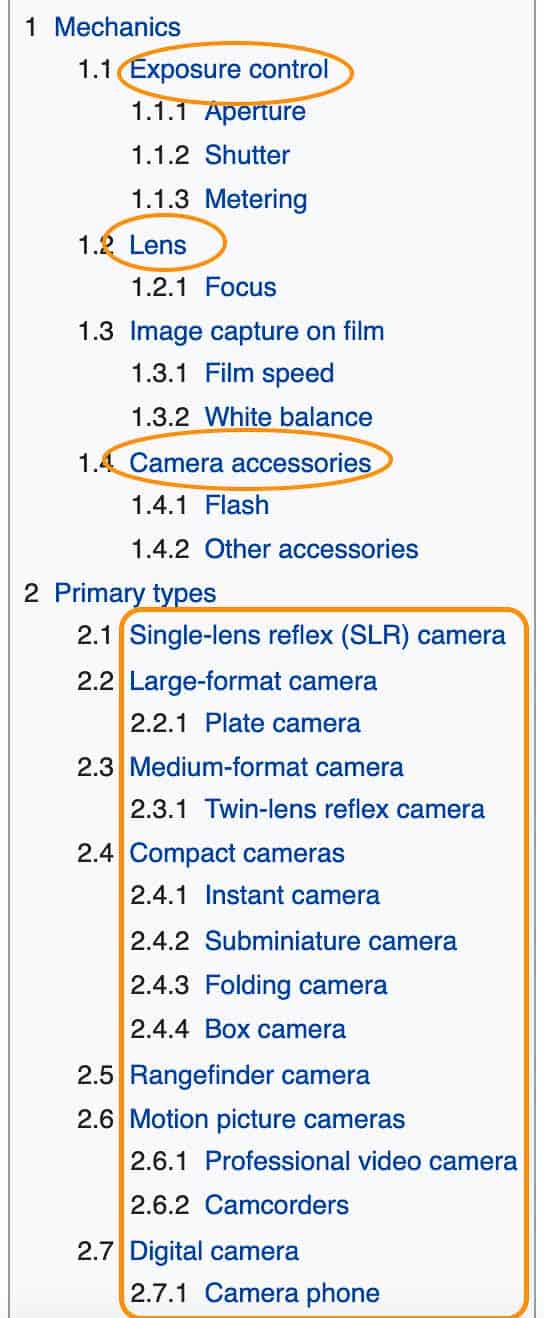
By clicking on the terms with a link, it will take you to even more niche ideas. So this is an excellent method to brainstorm niche market ideas.
method 2. Google’s suggestions
You can also use Google Suggest to find more niche market ideas.
Step #1. Head to Google, start typing in the search bar some of your terms, and Google will suggest some ideas based on what people are searching:

Step #2. You can even keep niching them down as you type with this method. Simply keep adding words to the left or right of your keyword to get more suggestions:

This is a very effective and easy trick to find niche market ideas very fast.
Method 3. Answer the public.
This method couldn’t be more straighforward and efficient.
Step #1. Head to Answer The Public– Type your niche idea and click ‘Search.’

Step #2. Scroll down to find plenty of niche ideas. You could also use this trick to get ideas for your content.

Sweet and short. Straight to the point.
With these 3 methods you can get thousand of niche ideas in no time.
How to Validate your niche market ideas.
Now you have a list with potential ideas, is time to validate them.
The first step would be to confirm if there would be an audience for your selected niche. You will need to make sure there will be enough potential buyers to make it profitable.
If you go too niche, you might struggle to generate enough traffic and income. So it is vital to find a balance between search volume and competition.
Here are some ways to validate a new niche market idea:
1. Check niche trends.
The first step towards deciding if your niche idea could be profitable, is to check if it has an interest.
This can easily done with the help of Google Trends:
Step #1. Head to Google Trends. Type your niche idea in the search box and click search.

Step #2. Filter by location Worldwide (or your targeted location) and time 5 years. This will give you a better picture of how the trend is changing over time.
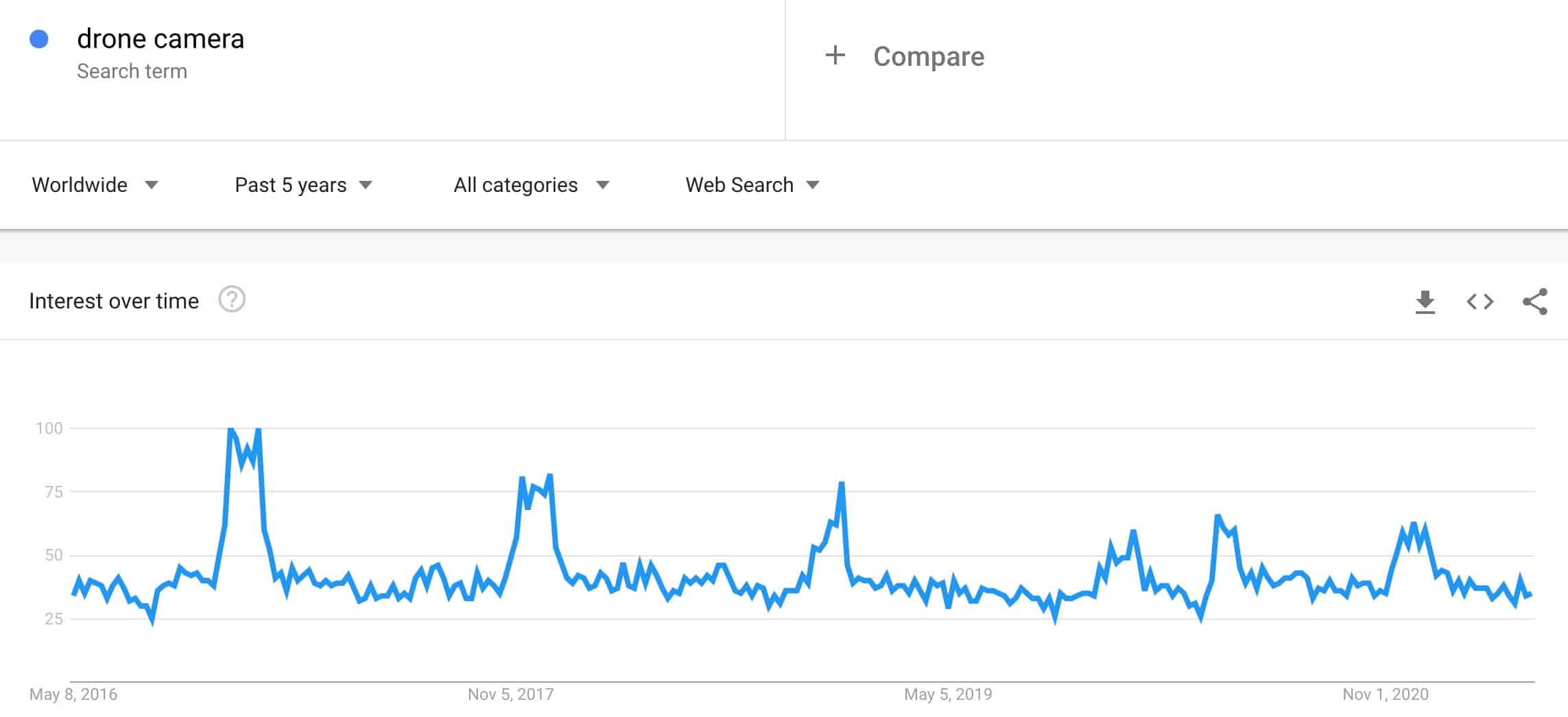
Step #3. Analyze the trend. If it looks stable (like this one) or growing over time, it is definitively a good sign. You want to stay away from trends with very little interest, of which interest has dropped dramatically.
For more info on this topic, read the full article in the link below:
2. Check Google Search Volume For Your Niche Idea.
Finding out how many people are searching for your niche idea and related keywords is a solid validation method. This will give you some insights into the potential traffic.
If you have an SEO tool, you will be able to make this more efficiently. But you can use some free resources just to have an idea:
Step #1. Head to Ubbersuggest. Type your niche idea and click search:

Step #2. Check the keyword search volume. This will give you an estimation of search volume per month. Normally, anything above 10k is great.

Step #3. Scroll down to the keyword ideas section. This will provide you more data on related search terms:
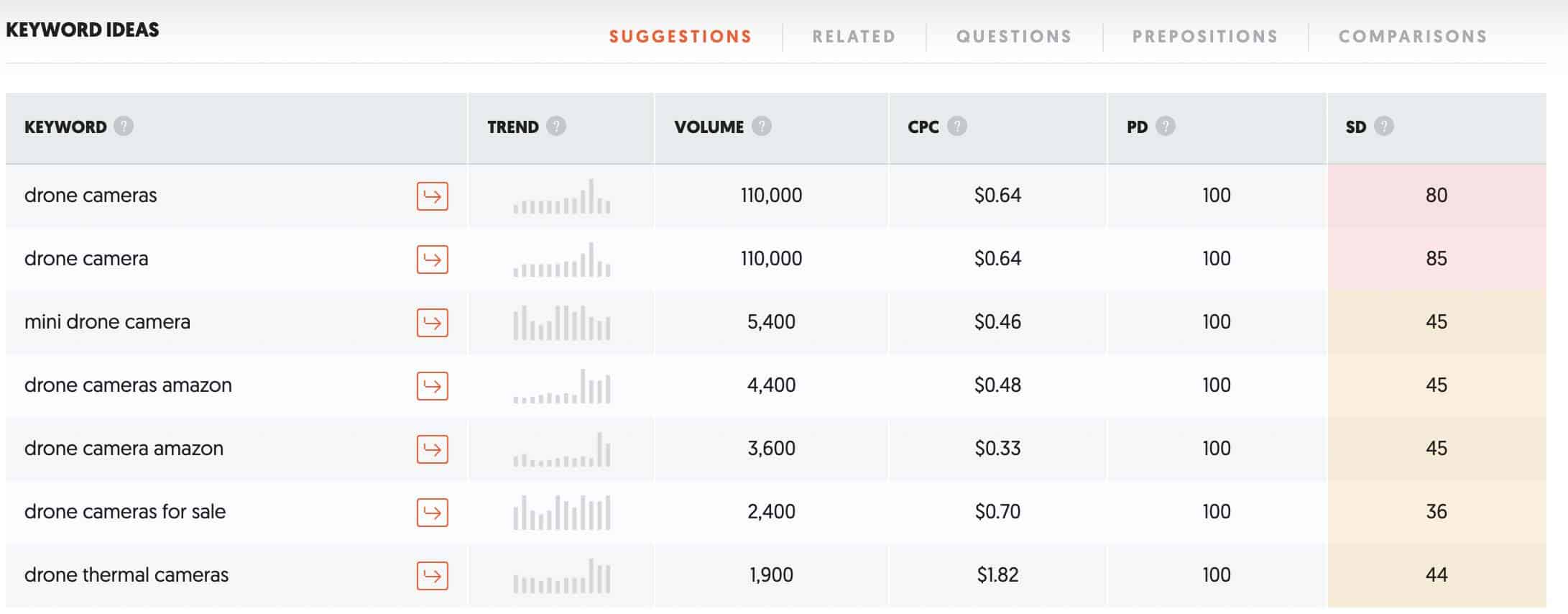
Overall, it seems that it is a topic with high interest. Remember that you are not trying to figure out how competitive the niche is for now- You’re simply figuring out if there’s a big demand for your niche ideas.
And for broader terms like this, you want big demand; otherwise, you’re going to be scrapping around in small niches that don’t have as much money being spent. So the bigger, the better for this purpose.
3. Check if there is a demand.
The best niches are ones with both physical and digital products available on sale and lots of them.
Though many niches will only be one or the other, that isn’t a problem as long as there’s a good selection of products and a demand for them.
For instance, blogging is one of the most profitable niches available, but it’s pretty much only digital products on sale.
I’m going to show how to find products or services that are selling well. There’s no specific volume or number you should look for. You just want to see some proof that people do buy in this niche and in high volumes.
Method 1. Use Amazon for physical products.
Amazon is a great resource to find profitable products.
All you need to do is:
Step #1. Head to amazon and type your niche idea or product idea into Amazon’s search bar.

Step #2. Check for popular products. If you’re seeing lots of products with hundreds and thousands of reviews it’s a great sign.
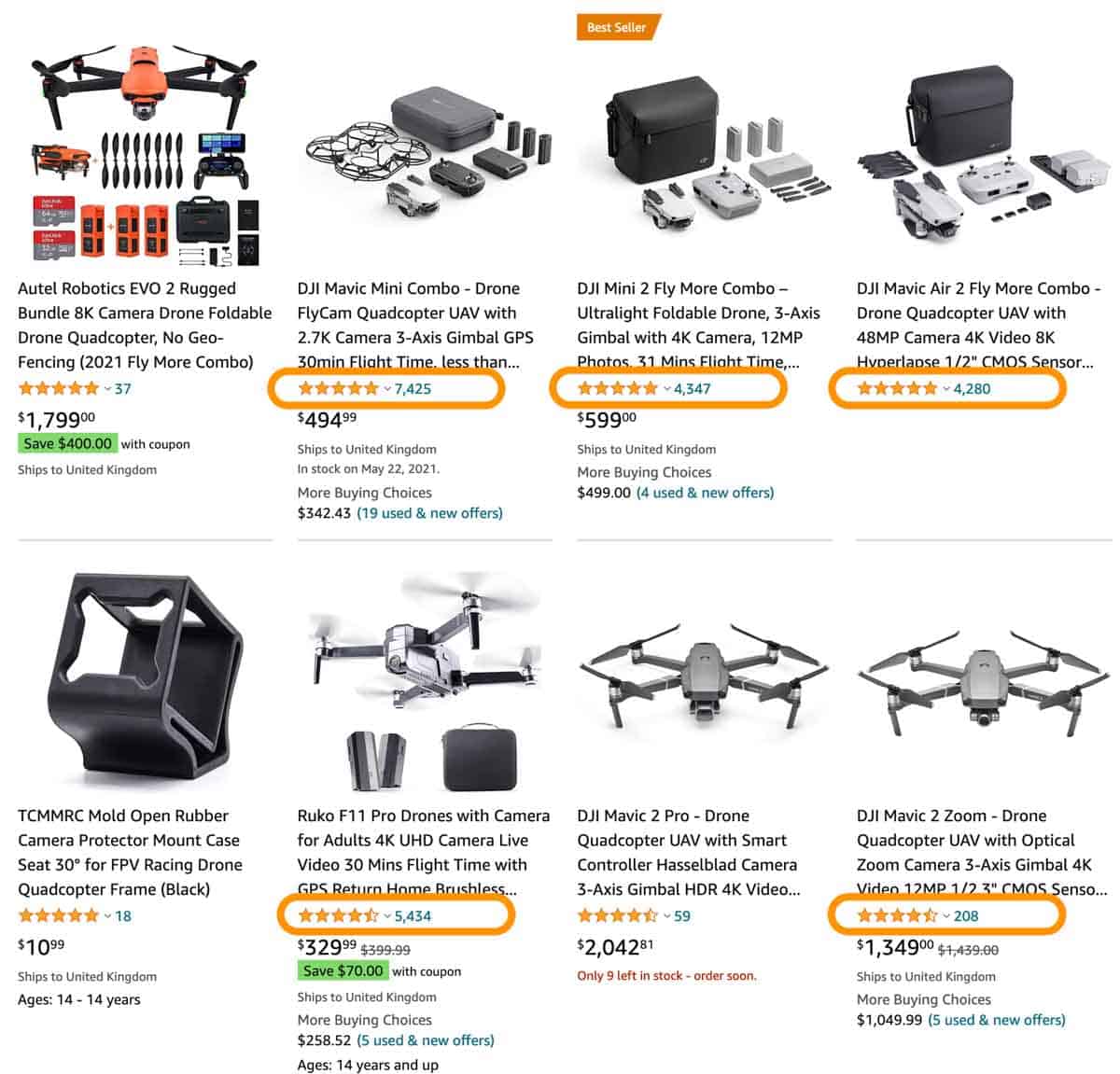
It’s estimated that for every 1 review anywhere between 10 to 1000 people have actually bought the product, as not everyone leaves reviews.
So look for several products with lots of reviews (preferably many with 100+) and it’s a sign of a healthy market where people buy.
Step #3. Check on the number of Amazon search results:

Ideal niche markets are the ones where there’s not just one single product to sell but many you can sell to your visitors time and time again. So look for related products on Amazon you might be able to sell too.
I suggest you note down the ideas you find and pay attention to the best-selling products. They might be the easiest to sell from your website.
Method 2. Use Clickbank for digital products.
Clickbank is ‘The Amazon’ for digital products. It’s the largest retailer of digital products on the net.
By checking their affiliate marketplace, you can find many interesting products matching your niche idea:
Step #1. Go to Clickbank marketplace. Then enter your niche idea and hit search.

Step #2. Next, sort your search results by “Gravity”. Products with high gravity are the most popular products.
The Gravity number is a unique algorithm from Clickbank that takes into account the number of unique affiliates who have sold at least 1 copy of that product in the past 7 days. So the higher the gravity of a product the more affiliates are promoting it and making sales.

Step #3. Analyze the results. Seeing lots of products in your niche with high gravity scores is a good sign as affiliates are making money. If you can find a good list, it is definitively a good sign.
Method 3. Use Udemy for services.
Udemy is an online learning and teaching marketplace with over 150000 courses and 24 million students.
It is not hard to see why you should can take advantage of those numbers for your niche research:
Step #1. Head to Udemy. In the search bar, type your niche idea and hit search.

Step #2. In the results, you want to look for the total number of results and the average reviews of the courses. If these two numbers are high, it is a great indication that there is interest in this topic, and people will be willing to pay for it.

These are all great methods to validate your niche idea and find out if it can be profitable.
niche Market examples.
1. Ethical travel bags and accessories for travelers photographers.
Business example:
There are plenty of travel bag stores. There are also plenty of bags for photographers. But are there many ethical brands building incredible well designed, and functional bags for travel photographers?
I am myself an amateur travel photographer. And as an owner of two of their bags, I can tell you there isn’t anything like the products of .
This is a first-hand example. Whenever I need to check for anything related to travel photography bags or accessories, I always go tofirst. This is what we discussed before about brand loyalty when you create quality products that stand out.
2. Responsible travel trips and adventures.
Business example: Intrepid Travel
This is another excellent example of a niche market within the travel niche.
There thousands of travel sites. So engaging fellow travelers these days is much more complicated. But Intrepid Travel takes traveling to a new dimension.
They provide responsible travel itineraries filled with adventures. Not everyone likes that, of course. But if you want to travel sustainably and love adventures, this can be a great match. Not to mention the reviews from their customers are all excellent.
Now, before you think this is too narrow, they offer different packages from basic to comfort. That way, they make sure they still capture people of all ages.
3. Affiliate marketing training for beginners.
Business example: Affilorama
Let’s now take a digital marketing example. There are thousands of sub-niches within digital marketing. So unless you narrow down enough to a specific niche market, you will find it very hard to succeed, especially in the world of affiliate marketing, which is one of the most competitive niches out there.
Affilorama knows that. And they also know that more and more entrepreneurs are venturing into the affiliate marketing world. That is why they have created a website full of resources for entrepreneurs to learn how to make money with affiliate marketing.
Meaning they have niched down from digital marketing > affiliate marketing > affiliate marketing training > affiliate marketing training for beginners. That is a clever way to stand out.
Moving forward with a niche marketing strategy.
Now that you know how to find a niche market and validate your ideas, it is vital to plan on your niche marketing strategies.
These are some tips you could do to gain brand exposure:
- Optimize for SEO. This is how you can really make a difference and make people find you organically.
- Promote on Social media and forums. You need to be active on the social networks where your target audience gathers. Look for discussions where your product or service might become handy for users and always provide value when marketing.
- Advertise on Google and Facebook. The fastest way you can drive traffic to your products or services is with paid advertising. The good thing is that the cost for niche market ads will normally be affordable compared to competitive terms.
I also suggest you check these resources to improve your business visibility:
- 10 Niche Marketing Strategies To Boost Your Business.
- 10+ Free Traffic Sources To Get More Website Visitors.
- Guide To Marketing Automation For ECommerce (+Best Tools)
conclusion- What is a niche market?
I hope you enjoyed this little introduction to niche markets. In this guide, I wanted to go beyond a simple definition of niche markets and actually give you a few concrete steps to get started.
As you can see, there’s a lot to learn about niche markets. But considering how much targeted traffic and the impact on your competitors, it is well worth the effort.
So I recommend getting started with the basics: Perform thorough niche research. Then start creating niche keyword-optimized content. Finally, create your niche website.
Once you do that, you’ll be able to create a profitable business.
Did you enjoy this article?
Share it on social media!